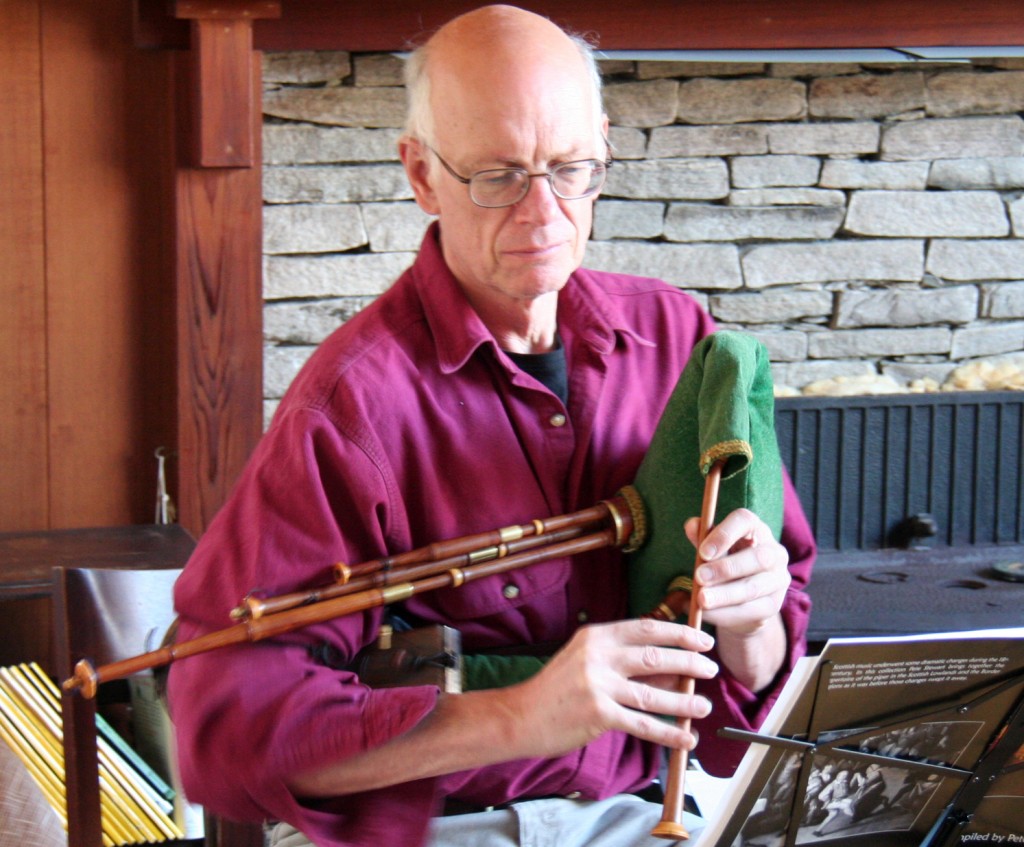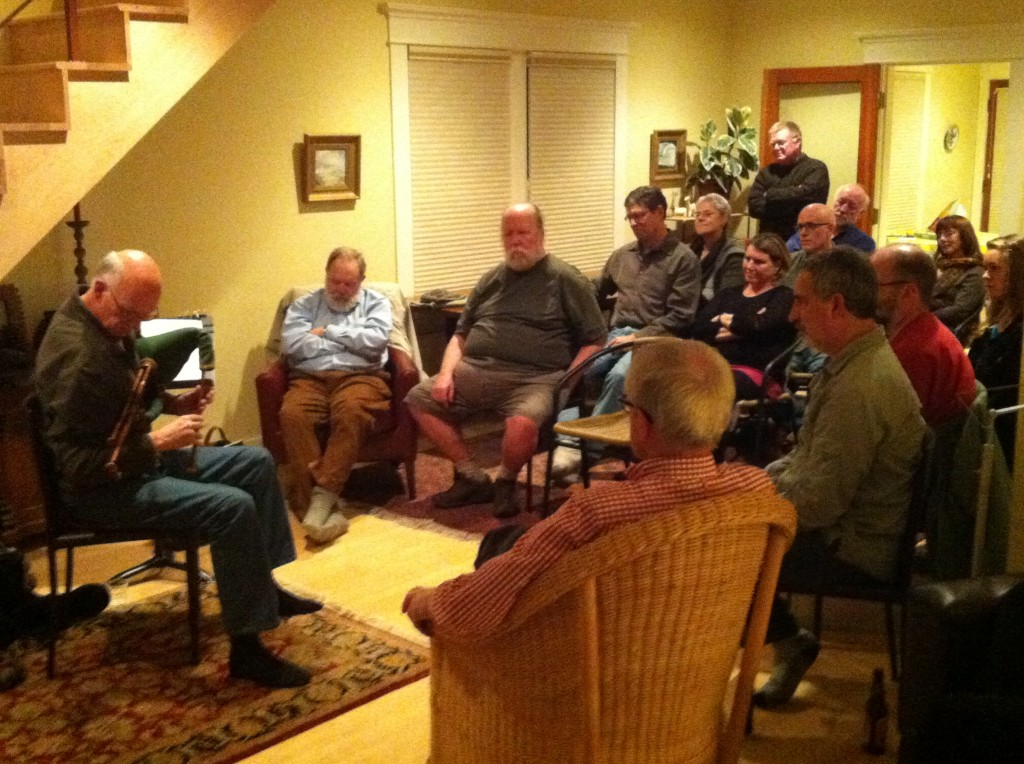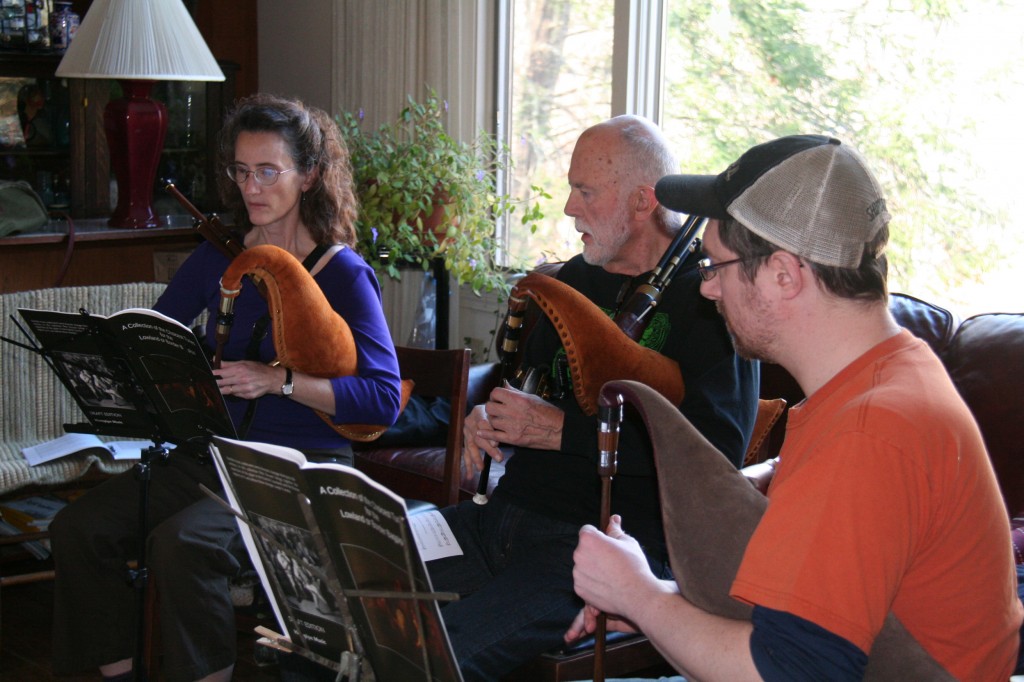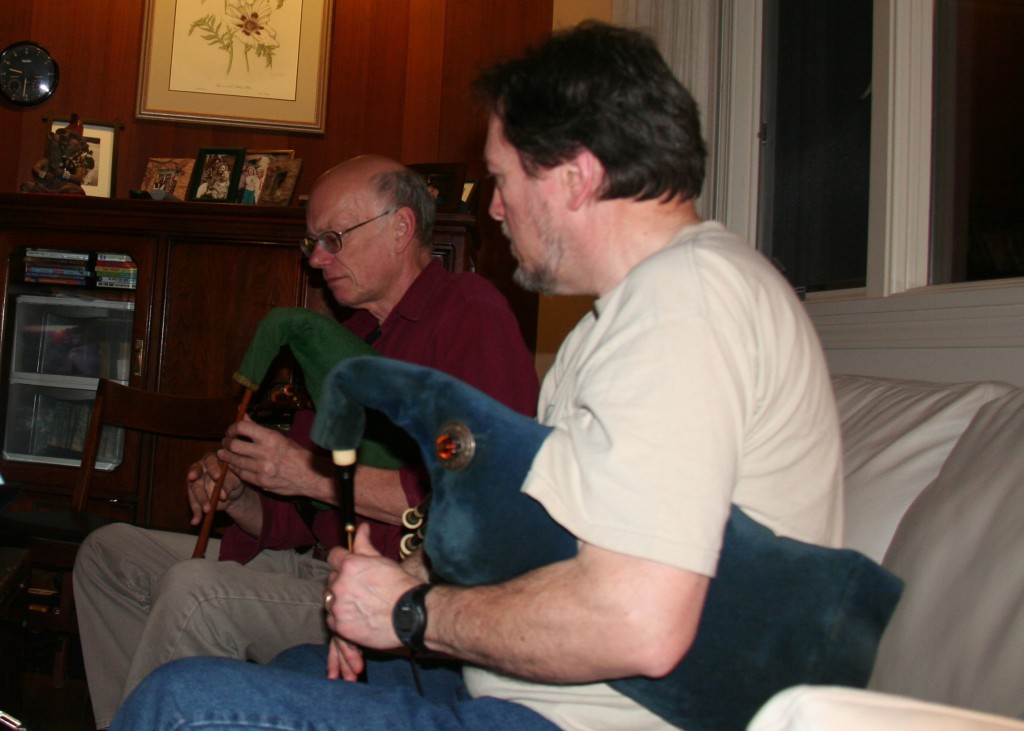By John Dally and Glenn Dreyer
The first North American workshop on Lowland piping with historian and Lowland piper Pete Stewart of Pencaitland, Scotland, was held November 8, 9 and 10, 2013 at the home of John Cunningham in Ballard, a neighborhood of Seattle, Washington State. It was an indubitable success. Ten pipers attended, with about half coming from a Highland piping experience and the other half being Northumberland pipers who also play Scottish smallpipes or Lowland pipes. All were enthusiastic about learning about Lowland pipe music, and Pete more than met their expectations. Among the attendees was APNA Board of Directors member Barry Shears, who travelled all the way from Halifax, Nova Scotia, Canada. Other participants travelled from as far away as Portland, Oregon. Pete gave an entertaining and inspiring house concert on the Saturday that was attended by about forty people, some pipers, but also fiddlers, singers and harpers, and Early Music enthusiasts.
During the two days of classes Pete covered many aspects of the Lowland piping traditions, emphasizing the essential rhythms of dance and song. Pete delved deeply into “digging the dird.” We gained important insights into tempi, time signatures, and the dances of the time when this music was commonplace. Many of these things were completely new to participants. Pete’s understanding of the context of Lowland piping of the 17th and 18th centuries is beyond deep, giving us a history of town pipers, their jobs and place in society. We all came away with new perspectives on piping as a whole in Scotland at that time. For many of us these insights brought on changes in our thinking that were as fundamental as the movement of tectonic plates.
Pete covered the important sources, including Skene, Dixon, Rook, Atkinson, and detailed many of the tunes which will appear in his forthcoming book, A Collection of the Choicest Tunes for the Lowland or Border Bagpipe. The students were given copies of relative settings of tunes and links to sources on the internet. In many piping workshops the approach is to teach a tune or two. Pete’s method was to give the pipers a context and tools for seeking out and interpreting the music. This fresh approach was well received by pipers, so much so, that before the end of the seminar we had made plans to form a monthly Lowland session in the area.
One week later, a one-day, east coast version of the workshop was held at Glenn Dreyer’s house in Quaker Hill, Connecticut. It was attended by seven pipers from the region who had all met in previous years at the annual Pipers’ Gathering in Vermont. Pete again worked from draft copies of his upcoming book. Everyone one was playing Scottish smallpipes, which are more suited to group, indoor use that the louder border bagpipe. Once again, Pete’s main goal was to explain how he approached figuring out the rhythms and tempo of Lowland dance music from the 17th and 18th Century. Since the Lowland piping tradition had essentially died out by the early 20th century, there are no recordings of even living memories of how pipers played these tunes. Using clues in the manuscripts, written descriptions of dance, and his forty years of experience playing traditional dance music, Pete led the group through a variety of time signatures and tune styles. Although only one day long, Pete packed in a large amount of information and left the group with draft copes of his new tune book to keep working on.
Sharing meals and beverages together that day further bonded the participants. In the evening, a few more musicians arrived, including a fiddler, harpist and guitar player from the local Scottish folk band Mystic Haggis. An informal ceilidh and jam session ensued, providing a fitting climax for an intense and very exciting day.
Special thanks go to Pete for making the trip in the first place, for being such a gracious, patient and thorough teacher, and for being so generous with his knowledge and time. Thanks also to John and Gerda Cunningham and Glenn and Wendy Dreyer for opening up their homes to the pipers on both coasts. APNA Board members John Dally, Michael Simone and Glenn Dreyer were responsible for the planning and executions of these events.
And last, but not least, these workshops would not have been possible without the generous financial support of the Lowland and Border Pipers’ Society and the Celtic Arts Foundation, to which all participants are very grateful.
LOWLAND PIPING RESOURCES from Pete Stewart
Lowland and Border Pipers’ Society here
Manuscripts and Tunes:
Henry Atkinson Fiddle Manuscript index. This is a fiddle MS from c. 1695 with some exceptional ‘bagpipe’ tunes. This page links to the FARNE website where the Manuscript is stored. The index lists the tunes alphabetically.
Robert Riddell’s A Collection of Scotch, Galwegian and Border Tunes 1794, index. The index to this unique publication links to Ross Anderson’s website where the MS is stored.
John Smith’s fiddle manuscript index. This link will download an index to the section of the Northumbrian Melodies Committee’s collection which contains John Smith’s tunes, originally dated 1750
The Rook Manuscript index. Upwards of 1260 airs selected by John Rook, 1840
Ross Anderson’s music pages. A major source of early manuscripts, publications and recordings of all kinds of UK piping. Essential stuff.



